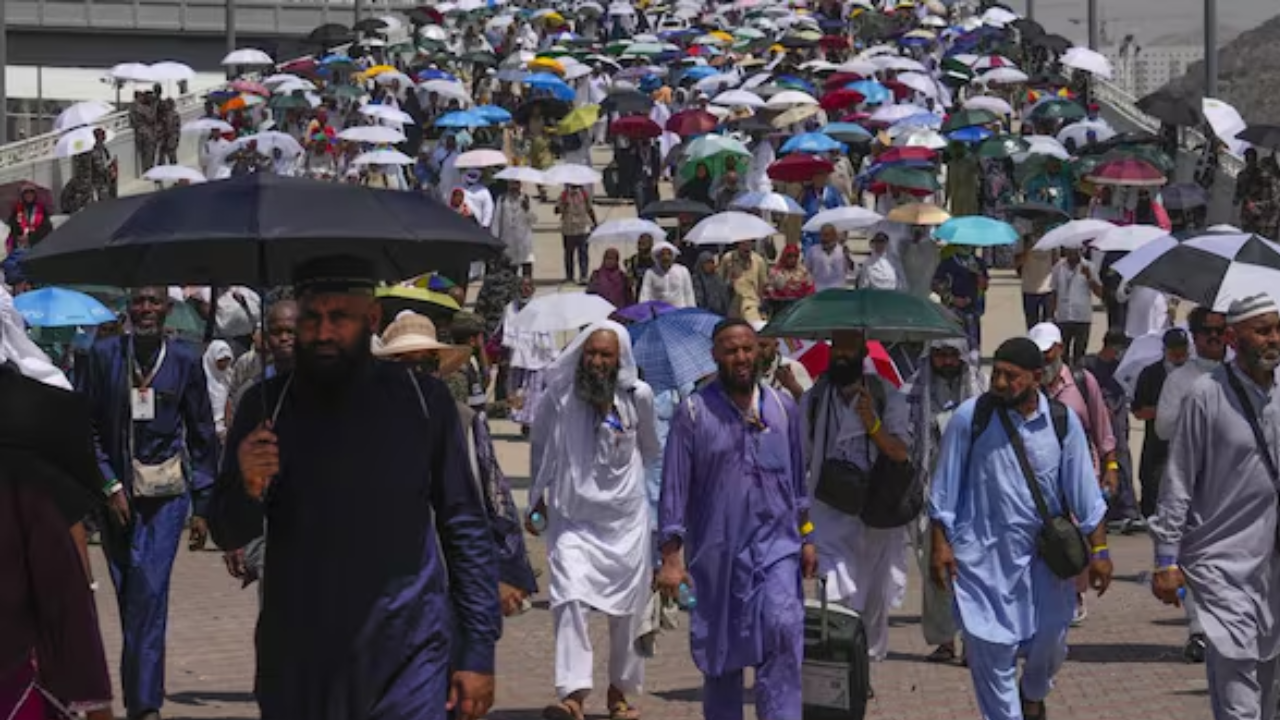World
Hajj deaths: ‘Walking past bodies covered in white cloth became norm’ – Times of India

As the official death toll of this year’s Hajj pilgrimage rose to 500, two pilgrims who witnessed the situation told CNN that there were not enough medics of basic facilities to protect Haj pilgrims amid the sweltering heat in Saudi Arabia. Walking past bodies covered in white cloth became a norm as pilgrims were dropping dead.
London-based Zirrar Ali went to the pilgrimage with his 70-year-old father. Recounting his harrowing experience, he told CNN that the authorities did not provide enough water, shade or medical support when he was there. “To me, it felt like there are too many people, there are not enough medics, so they are just waiting for the worst of the worst to happen and then they will step in,” Ali said. “I couldn’t focus on my Hajj when I saw these people suffering,” he added.
‘Many pilgrims spent 12 hours outside per day’
Ali said five hours walking every day was the minimum but maximum pilgrims spent 12 hours outside per day. “Taking eight hours to get from A to B, that’s part of being patient and that’s considered hardship…but at no point were we told ‘if you don’t have water for ten hours, that’s considered part of Hajj’ it’s not considered to be part of Hajj, we should be giving comfort and taking care of ourselves,” he said.
This year, more than 1.8 million Muslims traveled to Mecca, 1.6 million of them from outside Saudi Arabia, according to the Saudi General Authority for Statistics.
Indonesia has so far reported the most deaths, 199, and India reported 98. Other countries reporting death tolls include Jordan, Tunisia and Pakistan.
One Egyptian tour operator said that because of increasing fees for Hajj package tours, as well as the devaluation of the Egyptian pound, many pilgrims opted for tourist visas, which had burdened the facilities set up in Mecca and the surrounding holy sites.
London-based Zirrar Ali went to the pilgrimage with his 70-year-old father. Recounting his harrowing experience, he told CNN that the authorities did not provide enough water, shade or medical support when he was there. “To me, it felt like there are too many people, there are not enough medics, so they are just waiting for the worst of the worst to happen and then they will step in,” Ali said. “I couldn’t focus on my Hajj when I saw these people suffering,” he added.
‘Many pilgrims spent 12 hours outside per day’
Ali said five hours walking every day was the minimum but maximum pilgrims spent 12 hours outside per day. “Taking eight hours to get from A to B, that’s part of being patient and that’s considered hardship…but at no point were we told ‘if you don’t have water for ten hours, that’s considered part of Hajj’ it’s not considered to be part of Hajj, we should be giving comfort and taking care of ourselves,” he said.
This year, more than 1.8 million Muslims traveled to Mecca, 1.6 million of them from outside Saudi Arabia, according to the Saudi General Authority for Statistics.
Indonesia has so far reported the most deaths, 199, and India reported 98. Other countries reporting death tolls include Jordan, Tunisia and Pakistan.
One Egyptian tour operator said that because of increasing fees for Hajj package tours, as well as the devaluation of the Egyptian pound, many pilgrims opted for tourist visas, which had burdened the facilities set up in Mecca and the surrounding holy sites.
Continue Reading







:max_bytes(150000):strip_icc()/roundup-writereditor-loved-deals-tout-f5de51f85de145b2b1eb99cdb7b6cb84.jpg)


